Acoustic Energy AE309 Floorstanding Loudspeakers Review
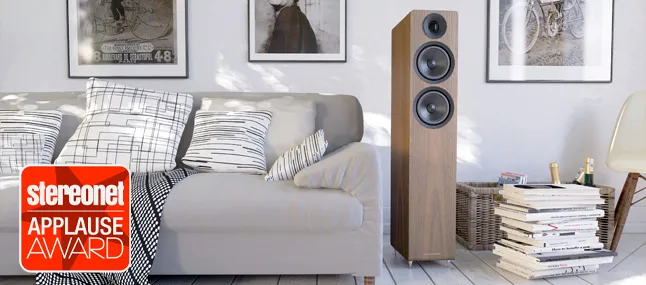
David Price thinks this bubbly budget floorstander sounds better than it should…
Acoustic Energy
AE309 Floorstanding Loudspeakers
£1,149 (Gloss Black/White), £1,249 (Walnut)
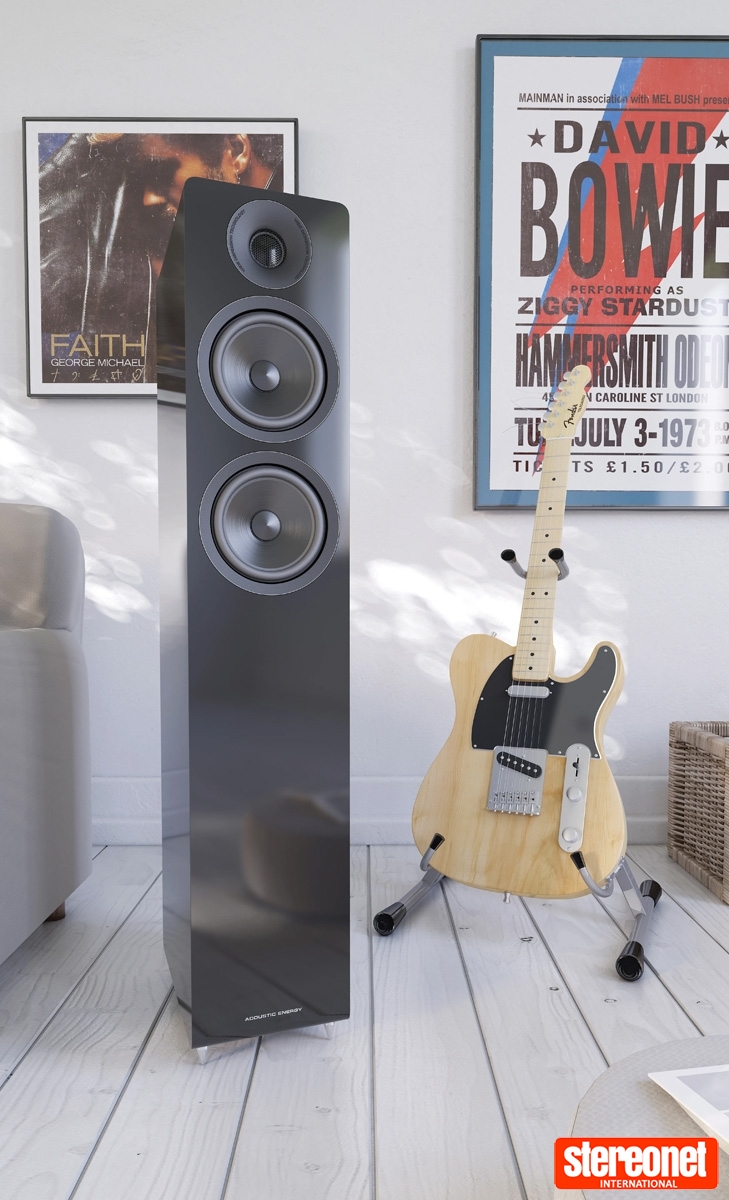
I sometimes liken hi-fi manufacturers to wines – their quality tends to vary over the years, as personnel come and go, skills and knowledge grow and then wane, and the wider hi-fi weather changes. A decade or so ago, I would argue that Acoustic Energy was making good if not exceptional, loudspeakers. At the same time, certain other brands fizzed with excitement and really shook the market up. For the past few years, however, this company has been on the up. In the AE500 series, for example, it has launched highly capable speakers that easily bear comparison with anything else at the price – and with the new AE309, this trend continues.
UP CLOSE
This floorstander is a 2.5-way design that measures a not inconsiderable 900x175x280mm and weighs a vast 22kg per box – so for the money, it is massive. Although the AE309 looks surprisingly well dressed given its price, designer James Luce has spent proper money on the drive units. There are three of them – a 25mm aluminium dome tweeter, a 130mm mid/bass driver and a 130mm bass driver. The latter two use a ceramic/aluminium sandwich material for their cones. Needless to say, they are bespoke designed and manufactured like every other such driver used by this company.
These two larger drive units – which work in parallel – give this speaker much of its sonic appeal – when allied to the sturdy, solid cabinet. The former sport a long throw motor system and appear able to soak up power way better than you’d think for a speaker of this price. They cross over between one another at 296Hz, and then at 2.56kHz the tweeter takes over from both, James tells me. Working in conjunction with an 18mm thick MDF cabinet – complete with extensive external bracing, it makes for a grown-up looking product at the price.
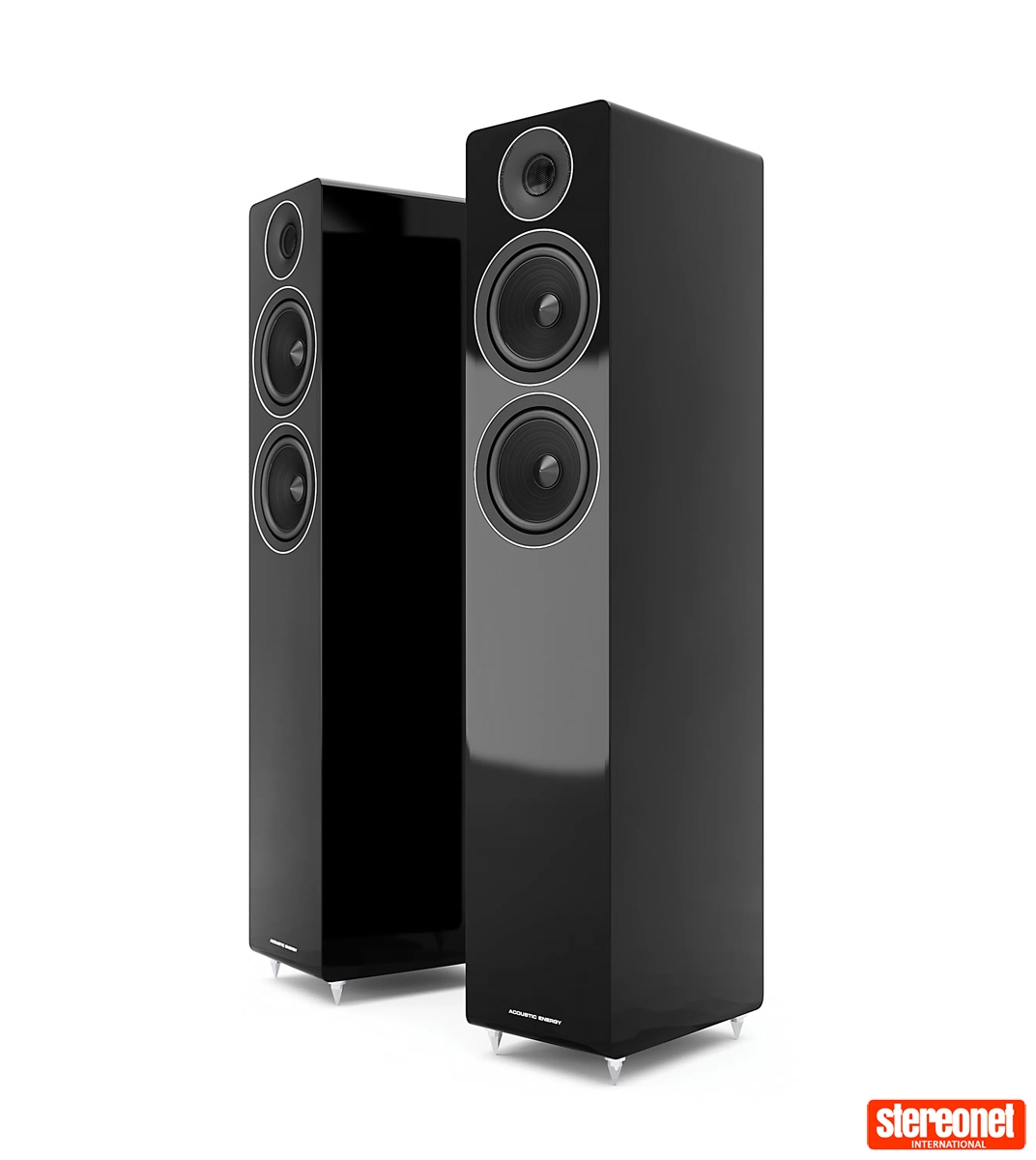
Real walnut wood veneer finish costs a touch more on top of standard issue piano-grade high gloss black or white lacquer versions. Round the back, you can find Acoustic Energy’s beloved slot-shaped bass reflex port, which in my experience, booms less than most. It’s also a convenient carrying handle, as you attempt to heave the speaker out of its packaging! The cab sits on 8mm floor spikes, and there’s an inert, massy damping material fitted to the very bottom of it; James calls this a “simplified version” of the constrained layer damping fitted to the more expensive AE500 series.
The result is a largish, suave-looking floorstander that looks much better than its price suggests. It is relatively unfussy about the room it sits in, and doesn’t ask too much of the amplifier driving it – with an above-average quoted sensitivity of 89dB/1w/1m. The 175W RMS maximum input power shouldn’t be a worry for most people, unless they run nightclubs in their spare time. A claimed frequency response of 38Hz to 30kHz is impressive – but as is so often the case these days, the manufacturer doesn’t specify roll-off points (at -3dB), so this doesn’t mean much in practice. I found my review pair sounded best about 30cm from my rear boundary wall.
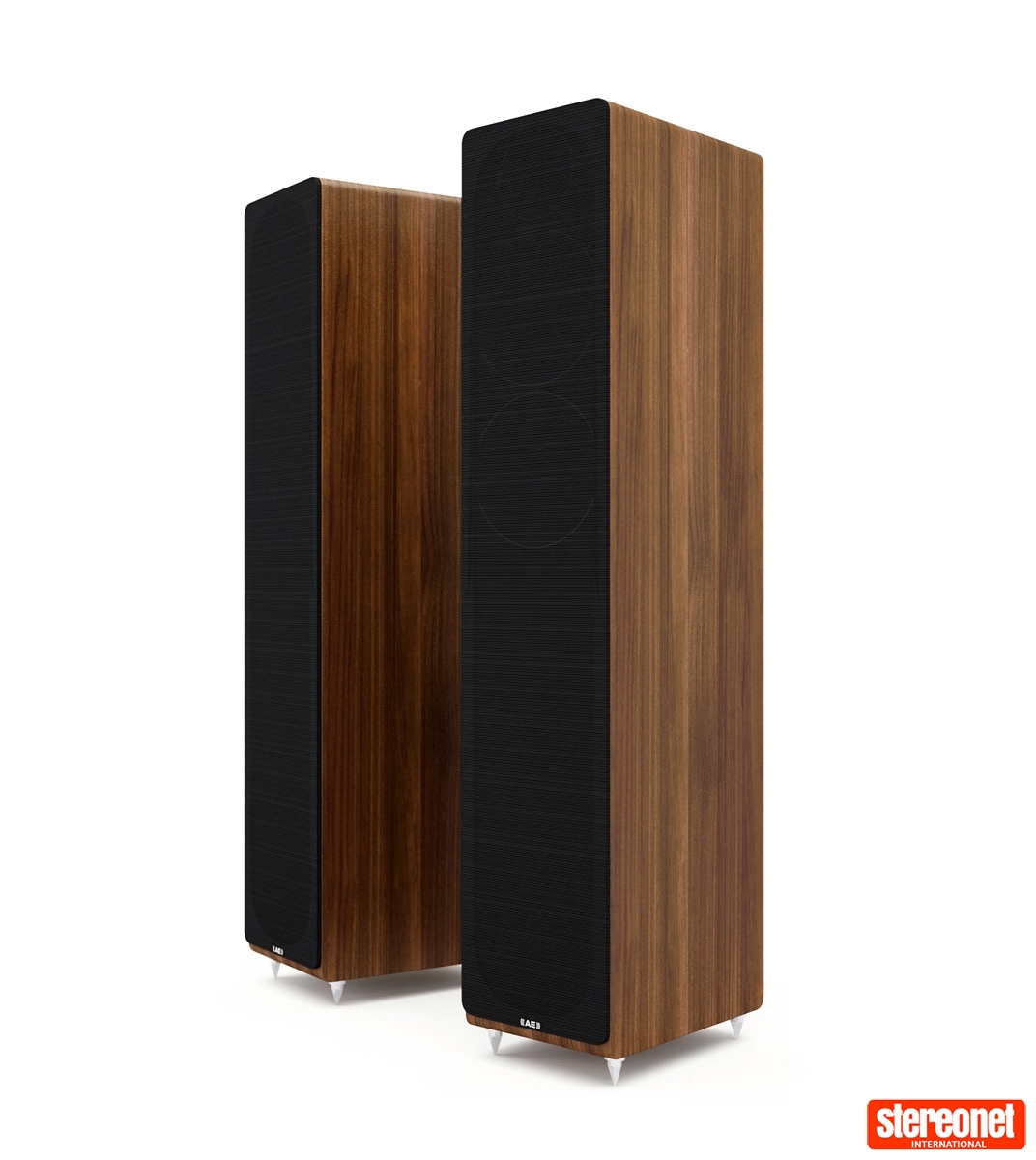
THE LISTENING
The AE309 is a big bruiser of a floorstander considering its price, offering truly impressive bass extension and power, allied to a fairly open and musically communicative midband, plus a nicely integrated and relatively smooth treble. It has better dynamics than you’d expect from a speaker at this position in the market too, and greater scale. Together, these attributes make for a highly enjoyable package that offers just enough of what an affordable speaker needs to do, to give itself an edge.
Looked at more closely, the AE309 is a perfect fit between the company’s high end AE500 series and the entry-level AE100 range. The latter is fun but basic; it has plenty of energy and life, but not a massively detailed window onto the world. The AE500 retains the joi de vivre of the baby speaker, but adds vast amounts more in terms of transparency and tonal accuracy. The AE309 tested here treads a happy medium between the two. The result is a detailed yet dramatic sounding speaker that never sounds dull and boring, nor is it shrill and harsh.
REM’s Fall on Me is a classic slice of indie rock from the mid-nineteen eighties. Whilst the music is masterful, the recording is a bit grey and steely in character – and does few favours for any hi-fi system, especially budget ones. Higher-end ones can pick their way intricately right into the recorded acoustic – the AE509, for example, does very well here. The AE309 has a good go, with a fair amount of midband detail and a slightly warm tonality that makes this track just a bit more palatable. Although it couldn’t offer forensic insight into what was going on at the mixing desk all those years ago, this speaker’s innate get-up-and-go really pushed the song along.
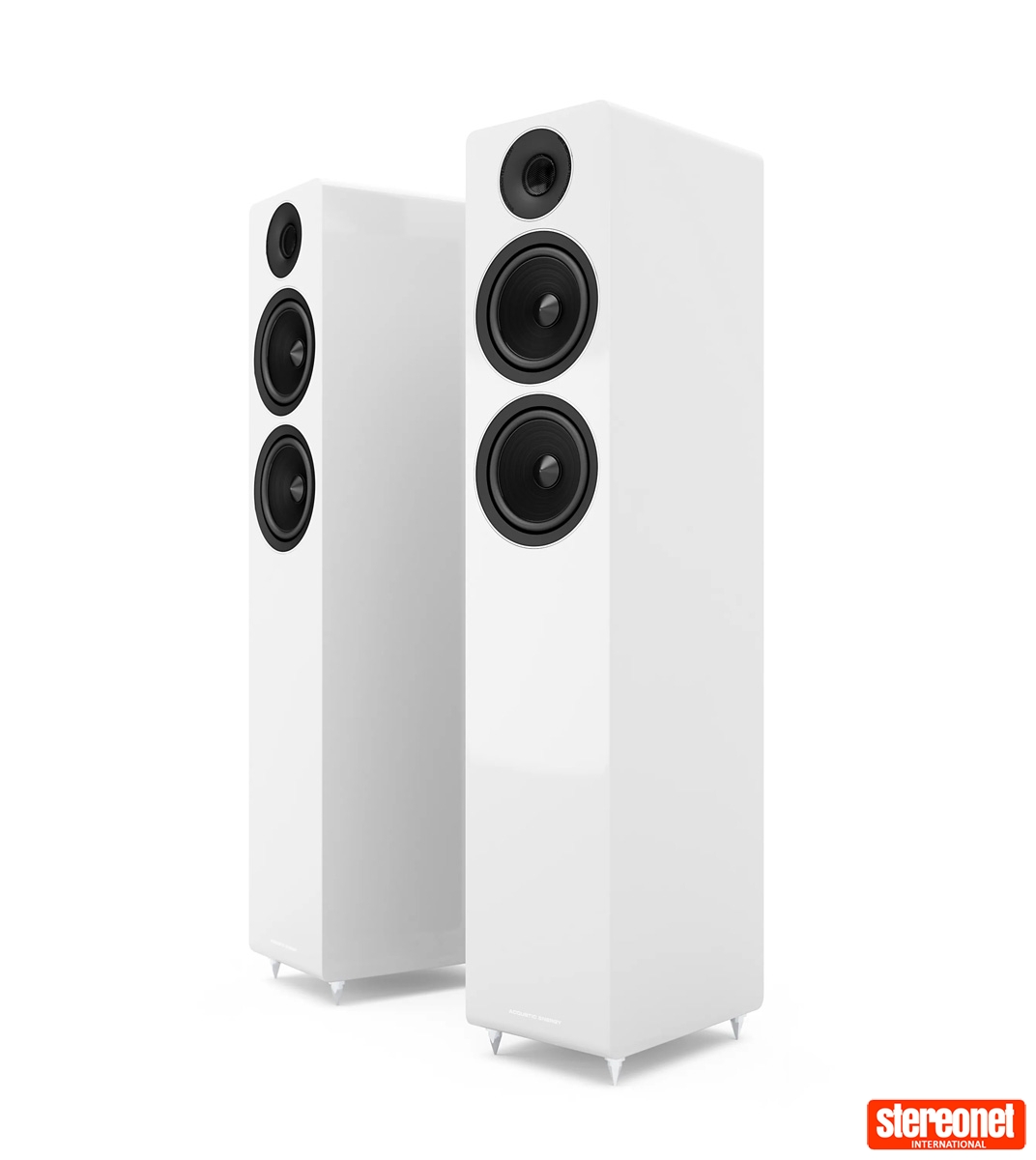
The Acoustic Energy floorstander certainly had a good time, capturing the beautifully syncopated, super-tight playing of the band, as well as the melodic feel of the song. It was a rousing rendition, maybe not quite as detailed as you’d hear from a more expensive floorstander, but still lots of fun. Indeed this proved a recurring theme when listening to this speaker – which turns out to have a big-hearted, endearing personality. It’s far less limited than many at this price in terms of the musicality of the performance, and you find yourself tapping your feet regardless of its lack of ultimate transparency.
It is with grandiose, big set piece productions that the Acoustic Energy really shines. The Pet Shop Boys’ It’s a Sin is such a thing, an eighties-tastic electro disco synth extravaganza with layer-upon-layer of detail and a massive, thumping bass. On many budget speakers, this can all turn into a big mushy blob, but not so with the AE309; this floorstander has the grip and articulation to show grace under pressure. Even at highish volumes, it pounded out the high-tempo electronic beat, the synthesised bass drum sound ripping around my listening room with heady abandon. On top of this, the synth stabs thundered around. This speaker compresses far less than you’d expect a budget (ish) floorstander to do, and proved able to impart the drama of the recording better than I’d expected.
It’s only when you give it delicate acoustic music that it begins to reveal its more humble origins. There’s a certain opacity to female voices for example, such as with Kate Bush’s This Woman’s Work. It’s in no way bad, it’s just that there’s a lack of translucence; instead, Kate’s distinctive tones sound just a touch nasal, as some of the delicate harmonics of her voice become slightly obscured. It’s not alone in this of course – one of its most accomplished rivals, the Q Acoustics Concept 40, does just the same. Yet again, the Acoustic Energy sounds more fun; it’s less analytical and matter-of-fact, and invests more romance into the proceedings. It stirs the heartstrings just a bit more, reminding the listener of the beauty of the music.
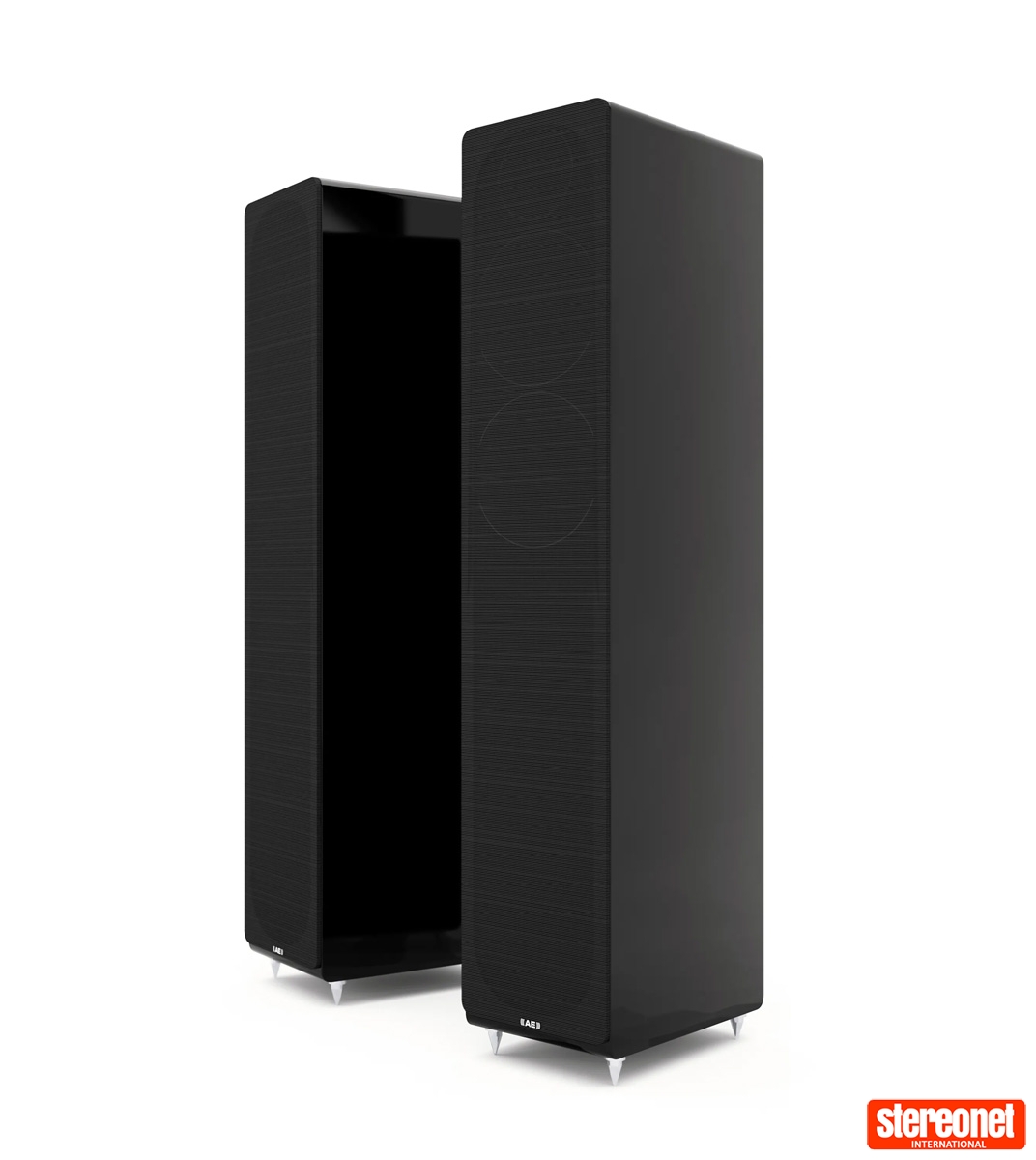
It gives an expansive sound, which is partly down to its fine drive unit integration and good cabinets, and also due to the big thump that the bass creates. It’s quite muscular in character, and with stadium rock tracks like Marillion’s Garden Party, you get a visceral, room-filling sort of performance that again belies the speaker’s size and price. A pair of AE309s fills most medium-sized listening rooms well, I would say. It’s not the most accurate in terms of image location, but it doesn’t really matter because you’re just enjoying the sense of occasion than the Acoustic Energy creates. Stage depth is decent too, so it’s a pretty immersive, larger-than-the-sum-of-its-parts sort of listen.
Bass is exceptional at the price. In absolute terms, it’s a little soft around the edges, but this isn’t an unpleasant effect – but the sheer energy that it can create really satisfies. Punchy British new wave classics like Nick Lowe’s So It Goes are huge fun as a result; it’s not that the bottom end is boomy, but it sure is gutsy. At the other frequency extreme, Acoustic Energy’s metal dome tweeter is a world away from the sort of thing you’d get in a speaker at this price, twenty-five years ago. It’s never shouty or shrill, and instead gives a smooth but crisp sound that doesn’t let the side down. Compared to the pricier AE509’s high-frequency unit, it’s way less subtle, atmospheric and detailed – yet it still gets on with delivering just the right amount of sting to the hi-hats in tracks such as this.
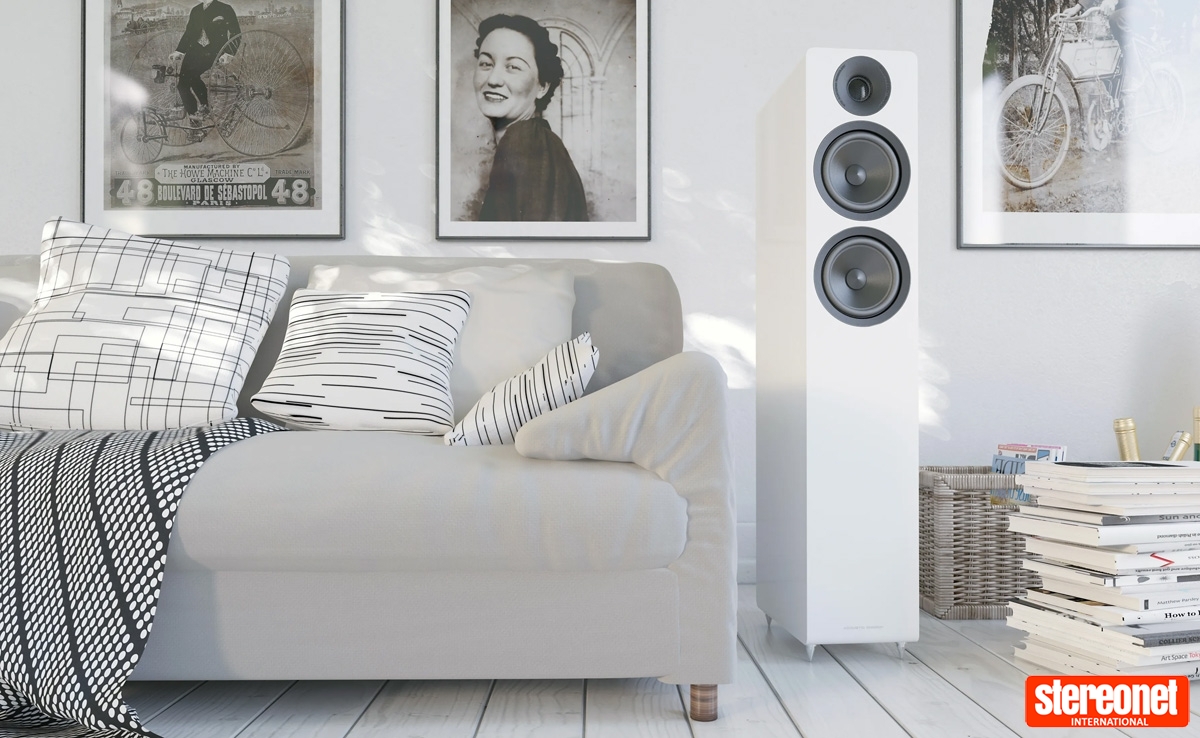
THE VERDICT
 Acoustic Energy has been sneakily getting really good over the past few years, and this is yet further proof, if we needed it. For a speaker at its price, the AE309 does a lot of things very well – but most important of all, it is fun. As with all the products from this company right now, it’s an expressive, fluid-sounding design that soon makes you forget about hi-fi and instead connects you to the music. Less of a tired, flat Sauvignon Blanc and more like a frisky little New World sparkling white, it’s well worth a listen if you have time.
Acoustic Energy has been sneakily getting really good over the past few years, and this is yet further proof, if we needed it. For a speaker at its price, the AE309 does a lot of things very well – but most important of all, it is fun. As with all the products from this company right now, it’s an expressive, fluid-sounding design that soon makes you forget about hi-fi and instead connects you to the music. Less of a tired, flat Sauvignon Blanc and more like a frisky little New World sparkling white, it’s well worth a listen if you have time.
For more information visit Acoustic Energy
David Price
David started his career in 1993 writing for Hi-Fi World and went on to edit the magazine for nearly a decade. He was then made Editor of Hi-Fi Choice and continued to freelance for it and Hi-Fi News until becoming StereoNET’s Editor-in-Chief.
Posted in: Applause Awards | 2022 | Loudspeakers | Floorstanding | Hi-Fi
JOIN IN THE DISCUSSION
Want to share your opinion or get advice from other enthusiasts? Then head into the Message
Forums where thousands of other enthusiasts are communicating on a daily basis.
CLICK HERE FOR FREE MEMBERSHIP
Trending
applause awards
Each time StereoNET reviews a product, it is considered for an Applause Award. Winning one marks it out as a design of great quality and distinction – a special product in its class, on the grounds of either performance, value for money, or usually both.
Applause Awards are personally issued by StereoNET’s global Editor-in-Chief, David Price – who has over three decades of experience reviewing hi-fi products at the highest level – after consulting with our senior editorial team. They are not automatically given with all reviews, nor can manufacturers purchase them.
The StereoNET editorial team includes some of the world’s most experienced and respected hi-fi journalists with a vast wealth of knowledge. Some have edited popular English language hi-fi magazines, and others have been senior contributors to famous audio journals stretching back to the late 1970s. And we also employ professional IT and home theatre specialists who work at the cutting edge of today’s technology.
We believe that no other online hi-fi and home cinema resource offers such expert knowledge, so when StereoNET gives an Applause Award, it is a trustworthy hallmark of quality. Receiving such an award is the prerequisite to becoming eligible for our annual Product of the Year awards, awarded only to the finest designs in their respective categories. Buyers of hi-fi, home cinema, and headphones can be sure that a StereoNET Applause Award winner is worthy of your most serious attention.





